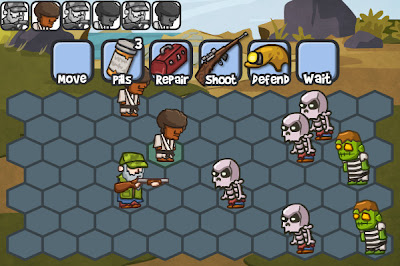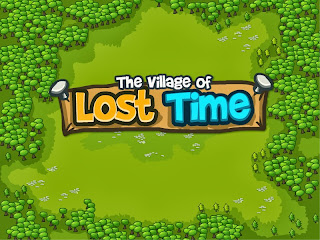I have a lot of the design of my next tactical turn based game finished. Most of the ideas came to me while camping multiple times in the woods over the month. It is much easier to think creatively in the presence of nature.
 |
| Art concept with placeholder icons |
Notice how with hexagons, all adjacent cells are equidistant from each other. In a square grid, moving diagonally basically is cheating because it has a greater physical distance. You could just limit movement to vertical and horizontal on a grid, but that would be four possible directions instead of six with hexagons. Hexagons win. Also, very importantly, a character immediately one row below another will never block visibility (see the two neighboring skeleton zombies).
Organize a squad of survivors. Each survivor optionally can move each turn, before using an ability exclusive to their class. Currently, classes include hunter, ninja, farmer, athlete, scientist, medic, mechanic, and butcher. It is a good blend of melee, range, and support which hopefully should stir up all kinds of strategies and class combinations.
Each class will have several (four?) abilities. For example, a hunter can shoot a rifle that penetrates everything in a line of hexagons. The farmer can throw a scarecrow decoy in a small radius. Athletes can hit a baseball that bounce off neighboring zombies for increased damage (think the scout in TF2, or chain lightning).
Survivors can hold additional secondary items. Such as a helmet for extra defense, or perhaps a machete for a free attack against a random adjacent zombie, triggered at the beginning of the player's turn.
Probably it will be free to play on iOS and Android, featuring exclusive premium content for additional classes and content. Also it wouldn't hurt to have a banner in that top right corner.
Making a mobile app does have its problems though. It's fantastic the iPhone 4 and 5 have a brilliant high resolution display, but the screen will always be quite small. I have found that the above hexagon layout is just the right size, without having to scroll around.

















































